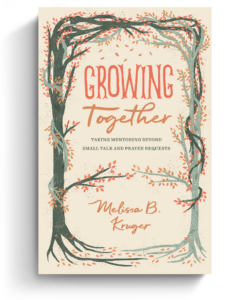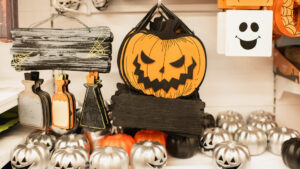When my dear friend Violet entered the hospice house in her last days of life, I was determined to love her well. As a former trauma surgeon, I’d seen people pass peacefully with loved ones holding their hands, while others drew a last breath only to inhale blood. I’d seen some die alone and afraid, and others wrapped in the arms of a spouse who whispered loving words as they drifted away. I wanted Violet’s last earthly moments to be awash in love and to reflect her identity as a beloved child of God.
Violet fell unconscious shortly after entering hospice, but for hours that turned into days then into a week, her pulse throbbed on. Although I’d seen the dying process dozens of times, the long hours watching a person I loved dwindle away took a toll on my heart. To watch the strong, feisty woman—who once cleared her own land with a chainsaw—fade away filled me with anguish. “Lord,” I pleaded through tears, “please, just take her home.”
Dying with Dignity?
What does it mean to die with dignity? Abstractly, we all long for a dignified death, during which family surround us and we suffer minimal pain and anxiety. In reality, however, the dying process is often unsettling, even when we try to prepare ourselves for its messy realities. Perhaps most importantly, however, conflating the phrase “death with dignity” and assisted dying confuses the conversation.
In assisted death or medical aid in dying (MAID), terminally ill patients seek assistance in ending their lives, either through a prescription they self-administer (physician-assisted suicide, or PAS), or by lethal injection from a physician (euthanasia). Both practices equate dignity with autonomy. For example, one advocacy group for physician-assisted suicide, Compassion and Choices, offers guidance on how to “finish strong.” “Finishing strong,” they clarify, occurs “by planning for an end-of-life experience that matches the life you’ve enjoyed—defined by love, purpose, and agency.”
Death with dignity, according to this view, hinges upon strength, purpose, and agency. Accordingly, when we are weak, discern no purpose in life, and can’t decide our own course, our dignity withers away. Sadly, a review of MAID data in Canada suggests participants in assisted death uphold just this view.
In 2022, the most common cited source of suffering among MAID recipients was loss of ability to engage in meaningful activities (86.3 percent). Second in line was inability to perform basic activities of daily living, such as bathing and dressing oneself (81.9 percent). Concern about pain control, while still significant, was third on the list (59.2 percent). Such statistics suggest that for those seeking assisted death, dependence and inactivity devalue life.
Biblical View of Dignity
The Bible teaches us our value depends not on our abilities or autonomy but on the Lord. As creations in God’s image (Gen. 1:26–27), our dignity is innate and irrevocable. Our struggles to walk or feed ourselves don’t threaten it. Our weakness and pain don’t steal it away. Our inherent dignity springs not from our works but from God’s good and perfect character.
According to Ewan Goligher, a critical-care physician in Canada, assisted death by its nature devalues, rather than dignifies, human life, because it denies our God-given worth. In his book How Should We Then Die? A Christian Response to Physician-Assisted Death, he writes,
Assisted death purports to uphold the value of persons by empowering them to choose when and how they should die. The question, then, is whether the act of deliberately causing death truly accords with intrinsic human value. Can you say that people really matter when you cause them not to exist? . . . An endorsement of assisted death necessarily implies support for the view that people have extrinsic value but not intrinsic value. People matter, but they don’t really, absolutely matter. (37–38, 40)
Scripture tells us that people do matter. A dignified death, by definition, can’t prioritize self-determination above the intrinsic value of human life. Rather, a dignified death will honor the sanctity of mortal life (Ex. 20:13) while also acknowledging our times are in God’s hands (Isa. 40:6–8). It will strive for mercy and compassion for sufferers (Matt. 22:39; Mic. 6:8) while also cleaving to our hope in Christ (John 11:25–26).
We weren’t created for the express purpose of independence, accomplishment, or even autonomy but for relationship with our loving God (Gen. 1:26–28). The Westminster Shorter Catechism says, “Man’s chief end is to glorify God, and to enjoy him for ever.” A death with true dignity keeps our dependence on the Lord in view and seeks to glorify him even if we aren’t in control of our final earthly moments.
Protecting Dignity at Life’s End
Death is the last enemy (1 Cor. 15:26). Its specifics, no matter how clearly anticipated, unsettle and aggrieve us because they were never part of God’s original design. How can we aim to preserve dignity when death is so harrowing?
While we never have authority to take life, we can aim to gracefully meet our days through advance care planning. Discussing advance directives with a physician and a pastor can ensure a care team upholds our values at life’s end. For those with a prognosis of months, hospice care can offer support and guidance through an otherwise frightening process. Such planning embraces the truth that God can work for good even through our dying process (Gen. 50:20; John 11:3-4).
I saw this beautifully with my friend. At my lowest, when I didn’t think I could linger at Violet’s bedside any longer, a chaplain entered the room and softly touched my shoulder. “I’m always awestruck at what a privilege it is to be here during this transition,” she said, a kind smile gracing her face. “We get to be here when our loved ones enter into his glory! I get tearful just thinking about it.” Then we prayed together, and she left the room.
As I sat alone again with Violet, a wave of solace washed over me. I could still uphold my friend’s dignity, even as her breathing became more and more shallow, even as she seemed a shadow of herself. I opened my hymnal to “Amazing Grace”—Violet’s favorite—and for the 30th time, in a voice choked with tears, I sang. I sang to remind Violet that God had saved her. I sang to remind her his grace would lead her home. I sang to affirm she had dignity, and worth, and love.
That evening, as I finally left her room with reddened eyes, Violet’s nurse stopped me. “That song,” she said. “Why did your friend like it so much?” And in that moment, God worked through my dear, feisty Violet—even as she lay unconscious and helpless—to share the good news of his love.
When you face the grief and fear of terminal illness, never lose grasp of your identity as God’s image-bearer, made new in Christ. And never underestimate God’s power to make his strength perfect in our weakness.
Involved in Women’s Ministry? Add This to Your Discipleship Toolkit
 We need one another. Yet we don’t always know how to develop deep relationships to help us grow in the Christian life. Younger believers benefit from the guidance and wisdom of more mature saints as their faith deepens. But too often, potential mentors lack clarity and training on how to engage in discipling those they can influence.
We need one another. Yet we don’t always know how to develop deep relationships to help us grow in the Christian life. Younger believers benefit from the guidance and wisdom of more mature saints as their faith deepens. But too often, potential mentors lack clarity and training on how to engage in discipling those they can influence.
Whether you’re longing to find a spiritual mentor or hoping to serve as a guide for someone else, we have a FREE resource to encourage and equip you. In Growing Together: Taking Mentoring Beyond Small Talk and Prayer Requests, Melissa Kruger, TGC’s vice president of discipleship programming, offers encouraging lessons to guide conversations that promote spiritual growth in both the mentee and mentor.
































